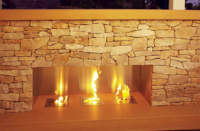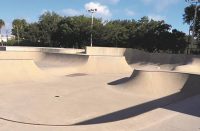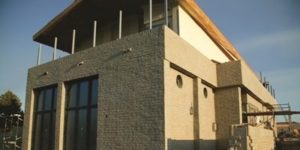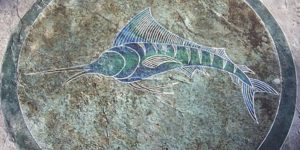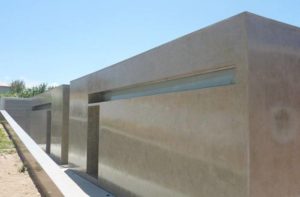There is a famous paperback called “The Elements of Style” by Strunk and White. Many writers treasure it as a guide to writing clearly and succinctly while avoiding common grammatical errors. The handbook itself is a model of clarity.
I had 26 years of studio work and art classes behind me as a fine arts painter when I gave up in disgust at the ploys involved in marketing art. In comparison with the world of galleries and critics, what contractors asked me to produce on floors came as a refreshing whiff of common sense.
Fifteen years later, I decided to teach some principles of design and composition to my contractor-students. Having some knowledge of the way artists think about filling space truly helps in choosing materials and structure. Therefore, I undertake this series of articles to present the Elements of Style for Contractors.
I was thrilled to see all the sweeping curves showcased in a previous article in Concrete Decor magazine. This image of the Louisiana Sports Hall of Fame shows the most remarkable use of concrete I have ever seen. It strongly reminded me of a contour drawing (to be defined below). Of course, that was a multimillion-dollar tour de force of engineering that took three years to complete, but other articles in the same issue showed how Justin Burd and Nathan Smith manage to incorporate bodacious curves into their furniture designs.
Would you like to sketch your creative ideas more fluently? If you are a concrete artisan, used to working with your hands and willing to practice, then you are halfway there. Learning to draw is really a matter of learning to observe in a certain way. Most artists of my generation learned to draw with the help of a book called “The Natural Way to Draw” by Kimon Nicolaides, a respected instructor who taught at the Art Students’ League in New York for many years.
Nicolaides’ training alternates slow contour drawing of the model with more rapid gesture drawing. The illustration below is a contour drawing, which takes 20 or 30 minutes and is done almost without taking your eyes from the model. You feel as if your pencil is tracing the edges of the planes you see. Including a few descriptive contours within the form gives depth to the drawing. In the first example I used a pen to draw a contour of my left hand. I included some skin folds and pale outlines of shadows to help clarify the foreshortened form.
The sketch above is a gesture drawing of my hand, which expresses the action contained in the shape. Twenty gesture drawings from different viewpoints might be done in the time it takes to do one contour drawing. Serious art students may spend a few hours each day alternating contour and gesture drawing.
You can see remarkable progress after a few months of such practice. Keep your drawings, even if you’re embarrassed by them, so you can see how far you’ve come. The important thing is the experience and practice. After 10 years of taking drawing workshops with live models in motion, I was able, on a good day, to combine both contour and gesture in drawings of dancers.
Here are two very different line drawings. The drawing of an Arab in prayer (above) by Delacroix is vertical and calm. The lines are exploratory and meditative. In contrast, the second drawing by Honore Daumier (above right) is full of dark-light contrasts and slanting diagonals, which indicate a forward rush of movement. In the 1870s, Daumier created lithographs weekly, satirizing French politics and laws. His skeletons depict murdered people thronging to the Council of War to denounce their executioner. Clearly, the force or delicacy an artist uses in making his marks can and does transmit to the viewer.
What does all this have to do with our designs in concrete? Look through this, or almost any, architectural magazine. You will see a preponderance of regular geometry — straight lines and perfect compass-drawn circles. A snapped-out line or a traced circle cannot convey the meanderings of nature or the emotions of the artist. Only rarely do we see a concrete artist with enough confidence and faith in his own style of line to enshrine it in concrete forever.
Another such artist I discovered in the pages of Concrete Decor is Brandon Gore, who works in Tempe, Arizona. (Editor’s Note: Read our Artisan in Concrete profile of Brandon Gore in the August/September 2010 online archives.) Gore’s best-known piece is his “Erosion Sink” (pictured at right). Although his works might look like spontaneous, freehand ideas, that is deceptive. It takes many experiments with concrete and GFRC to find the best way to embody an original design and to maintain the strength of the object being cast.
